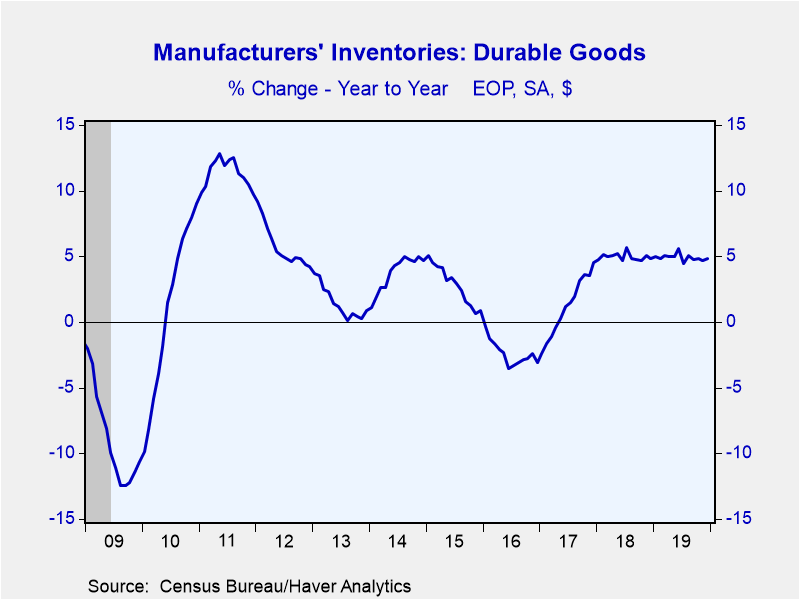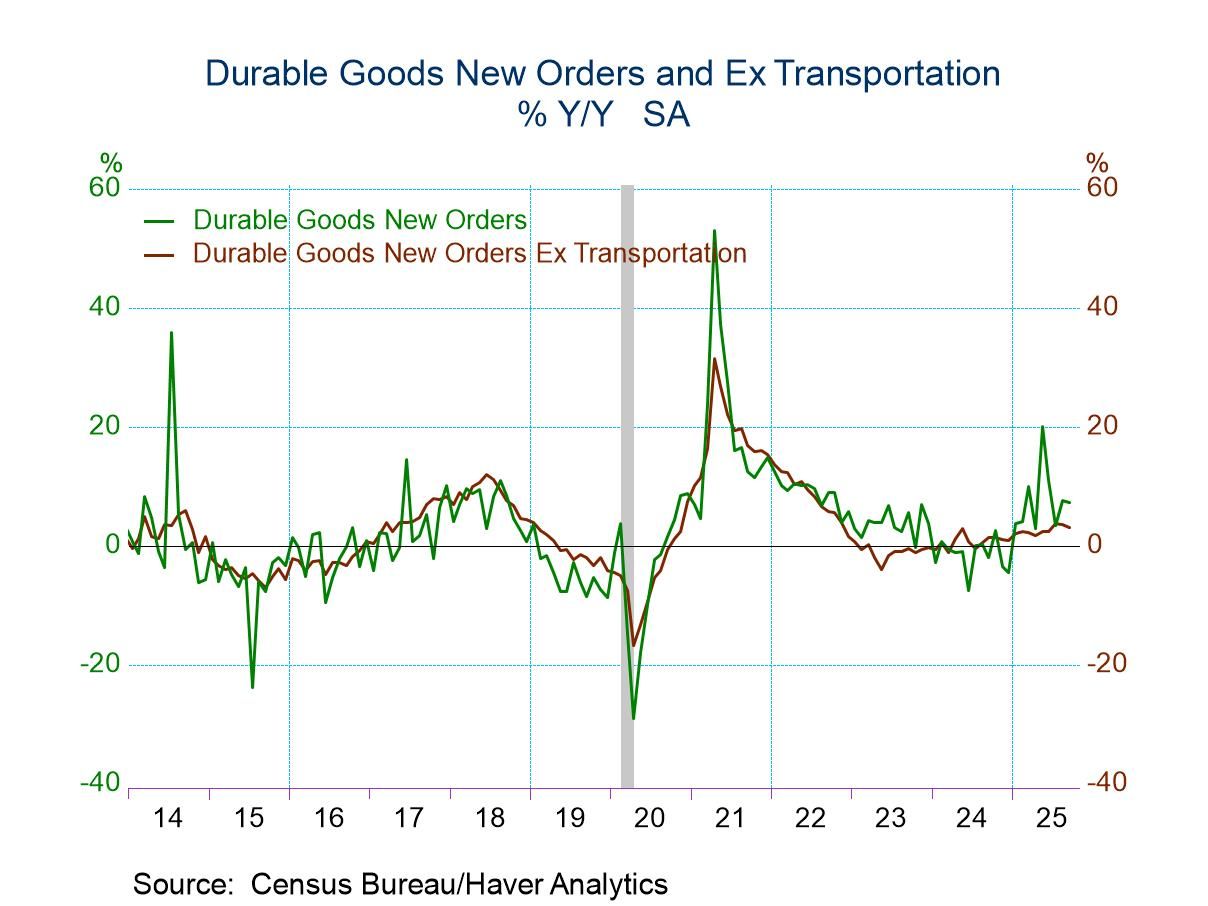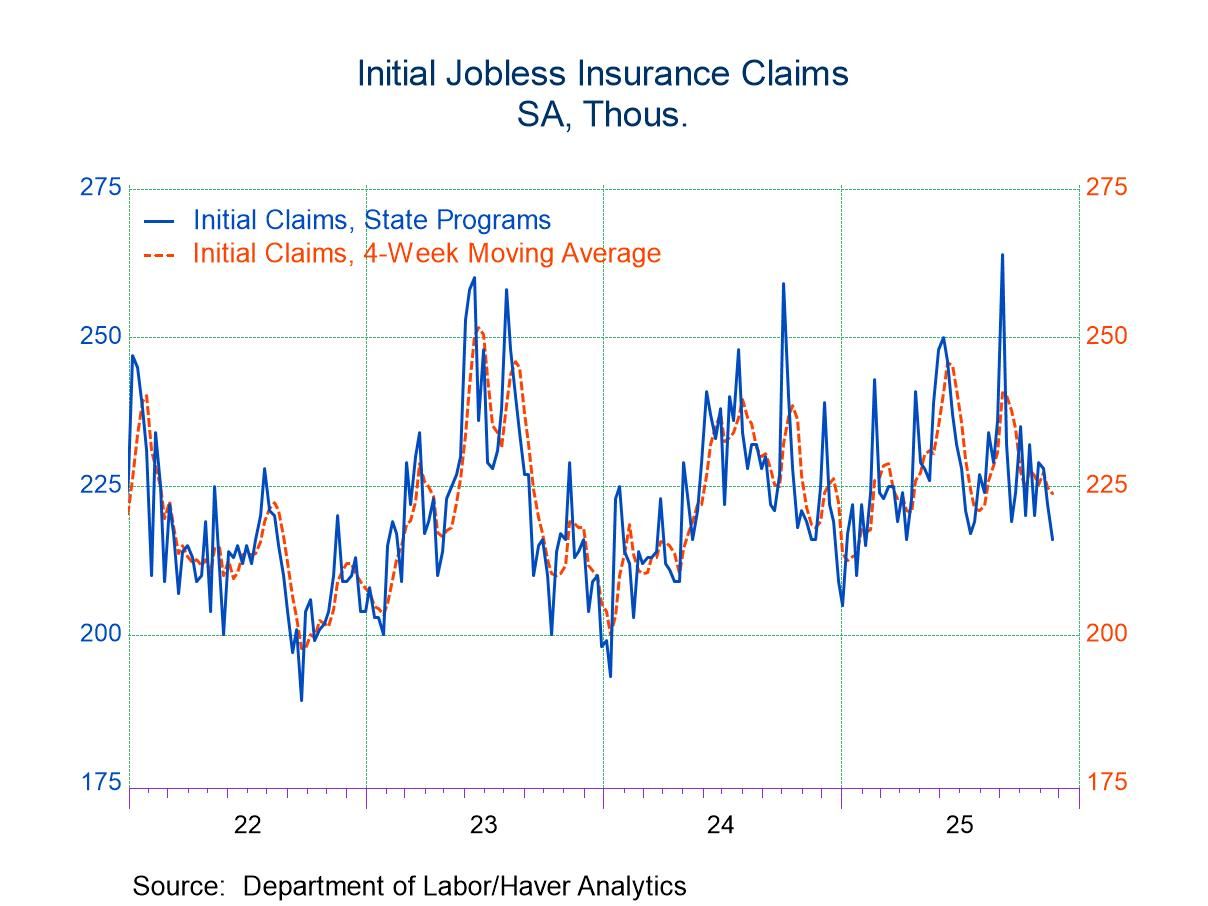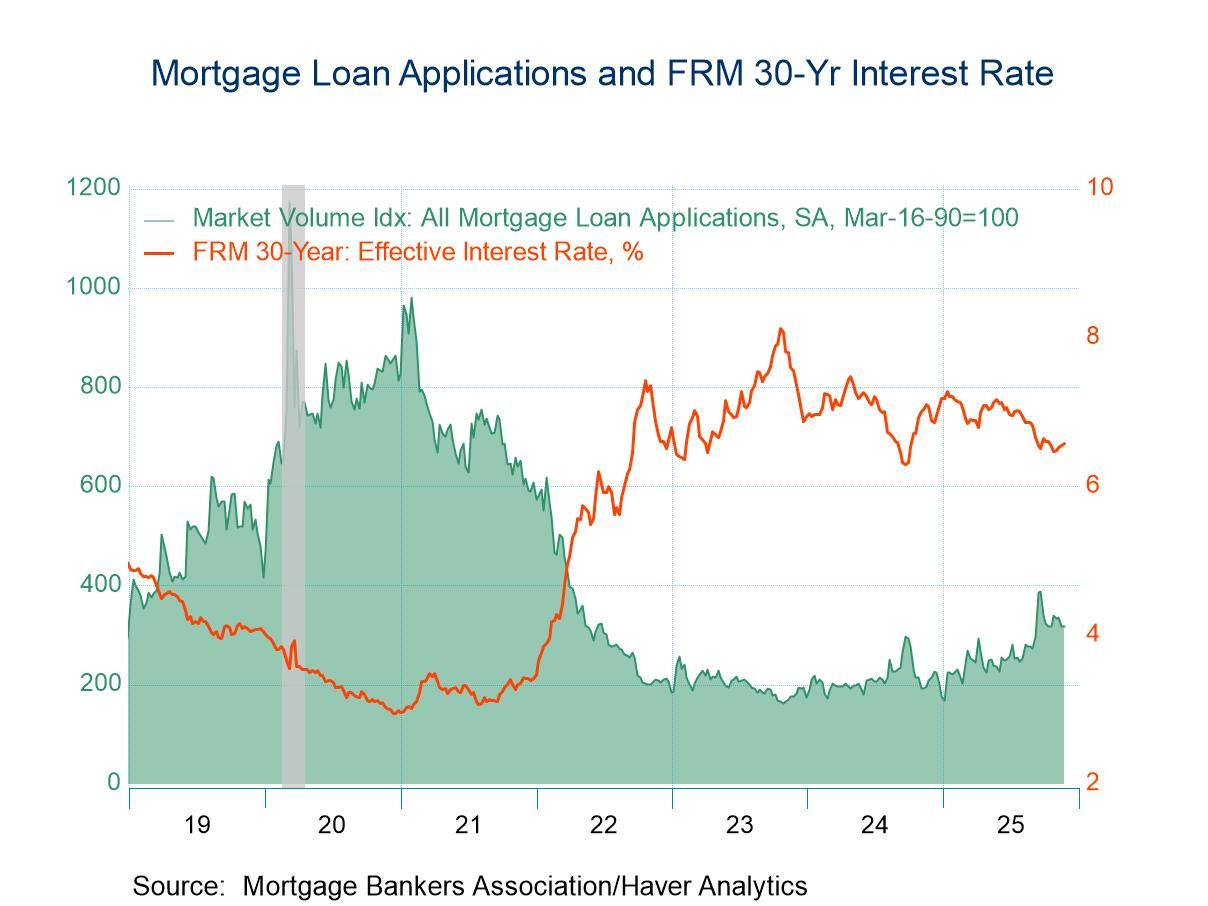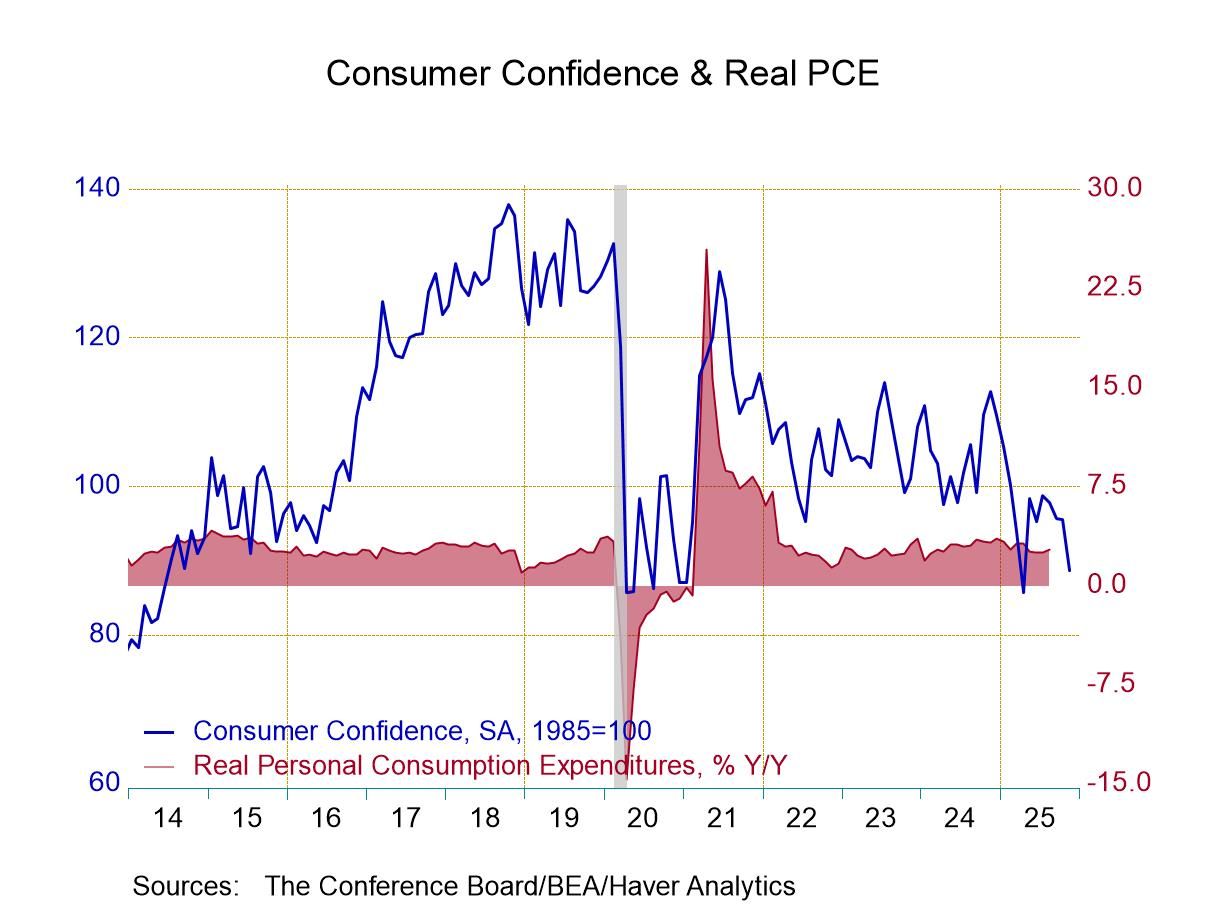 Global| Jan 28 2020
Global| Jan 28 2020Defense Driven Rebound of U.S. Durable Goods Orders, Core Capital Goods Decline
Summary
• Headline durable goods orders jumped 2.4% in December, failing to make up for the downwardly-revised 3.1% drop in November. • Transportation orders account for the volatility. Excluding transport, orders edged down 0.1%. • Core [...]
• Headline durable goods orders jumped 2.4% in December, failing to make up for the downwardly-revised 3.1% drop in November.
• Transportation orders account for the volatility. Excluding transport, orders edged down 0.1%.
• Core capital goods orders and shipments both contracted, with shipments down at a 0.7% annual rate in Q4, suggesting another quarter of declining equipment investment.
Manufacturers' orders for durable goods grew 2.4% in December (-3.7% year-on-year) following a downwardly-revised 3.1% fall in November (was -2.1%). The Action Economics Forecast Survey expected a 1.0% gain. Orders in the transportation sector jumped 7.6% (-8.4% y/y) after dropping 8.3% (was -5.9%). Nondefense capital goods orders less aircraft, which is a forward-looking indicator of capital spending, were down 0.9% (+1.0% y/y). Shipments of core capital goods, which is a key component used by the Bureau of Economic Analysis to estimate equipment investment in the GDP report, declined 0.4% in December (unchanged y/y) and was down at a 0.7% seasonally adjusted annual rate in the fourth quarter. In the third quarter GDP report, inflation-adjusted non-residential equipment investment declined at a 3.8% pace (+1.0% y/y). Overall non-residential investment contracted at a 2.3% saar in Q3 and 1.0% in Q2.
The jump in transport orders was driven by military shipbuilding, which is not reported in the advanced durable goods report. We do know that defense orders more than doubled in December (43% y/y), while orders for motor vehicles and aircraft -- which include both civilian and military -- were down 0.9% and 7.4% respectively (-5.1% and -58.1% y/y). Machinery, another key sector, was down 1.1% (-0.8% y/y) while fabricated metals increased 0.3% (-2.5% y/y).
Overall shipments of durable goods decreased 0.2% in December (-3.2% y/y), the sixth consecutive monthly decline. Shipments in the volatile aircraft sector rose 1.2% (-29% y/y), illustrating the impact of the grounding of the 737 Max (non-defense aircraft shipments fell 33% y/y). Motor vehicles were down 0.5% in the month and year-on-year. Excluding the transportation sector, shipments edged down 0.1% (-0.3% y/y). Shipments of non-defense capital goods excluding aircraft have fallen in five out of the last six months.
Unfilled orders for durable goods including and excluding transportation both ticked down 0.1% (-2.2% and -0.5% y/y respectively). Inventories of durable goods increased 0.5% (4.8% y/y). Excluding transportation, inventories grew 0.2% (0.3% y/y).
The durable goods figures are available in Haver's USECON database. The Action Economics consensus forecast figure is in the AS1REPNA database.
| Durable Goods NAICS Classification | Dec | Nov | Oct | Dec Y/Y | 2019 | 2018 | 2017 |
|---|---|---|---|---|---|---|---|
| New Orders (SA, % chg) | 2.4 | -3.1 | 0.2 | -3.7 | -1.3 | 7.9 | 5.4 |
| Transportation | 7.6 | -8.3 | 0.0 | -8.4 | -4.3 | 9.8 | 3.2 |
| Total Excluding Transportation | -0.1 | -0.4 | 0.2 | -1.0 | 0.4 | 6.9 | 6.5 |
| Nondefense Capital Goods Excl. Aircraft | -0.9 | 0.1 | 1.0 | 1.0 | 0.9 | 6.0 | 6.7 |
| Shipments | -0.2 | -0.1 | -0.1 | -3.2 | 1.2 | 7.1 | 4.0 |
| Nondefense Capital Goods Excl. Aircraft | -0.4 | -0.3 | 0.7 | 0.0 | 2.1 | 6.3 | 5.6 |
| Unfilled Orders | -0.1 | -0.6 | 0.0 | -2.2 | -2.2 | 3.9 | 1.9 |
| Inventories | 0.5 | 0.4 | 0.3 | 4.8 | 4.8 | 4.8 | 4.5 |
Gerald D. Cohen
AuthorMore in Author Profile »Gerald Cohen provides strategic vision and leadership of the translational economic research and policy initiatives at the Kenan Institute of Private Enterprise.
He has worked in both the public and private sectors focusing on the intersection between financial markets and economic fundamentals. He was a Senior Economist at Haver Analytics from January 2019 to February 2021. During the Obama Administration Gerald was Deputy Assistant Secretary for Macroeconomic Analysis at the U.S. Department of Treasury where he helped formulate and evaluate the impact of policy proposals on the U.S. economy. Prior to Treasury, he co-managed a global macro fund at Ziff Brothers Investments.
Gerald holds a bachelor’s of science from the Massachusetts Institute of Technology and a Ph.D. in Economics from Harvard University and is a contributing author to 30-Second Money as well as a co-author of Political Cycles and the Macroeconomy.





